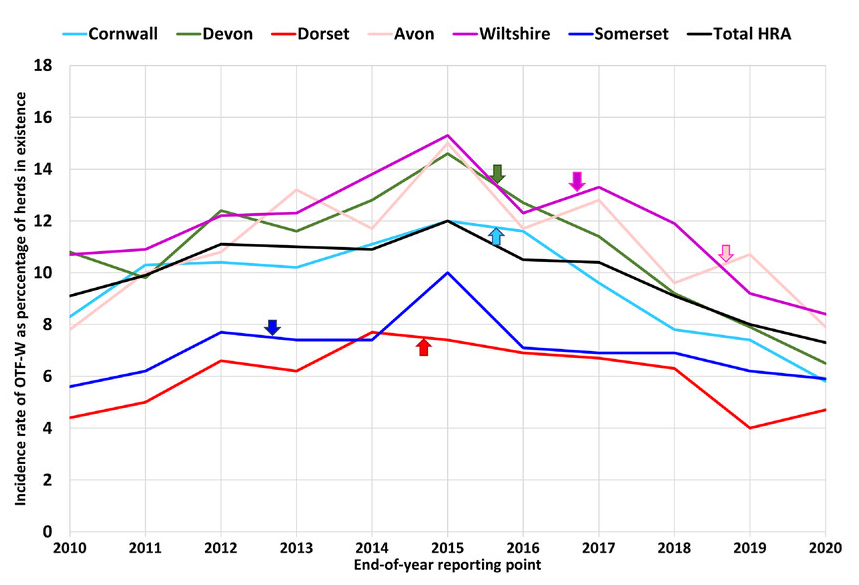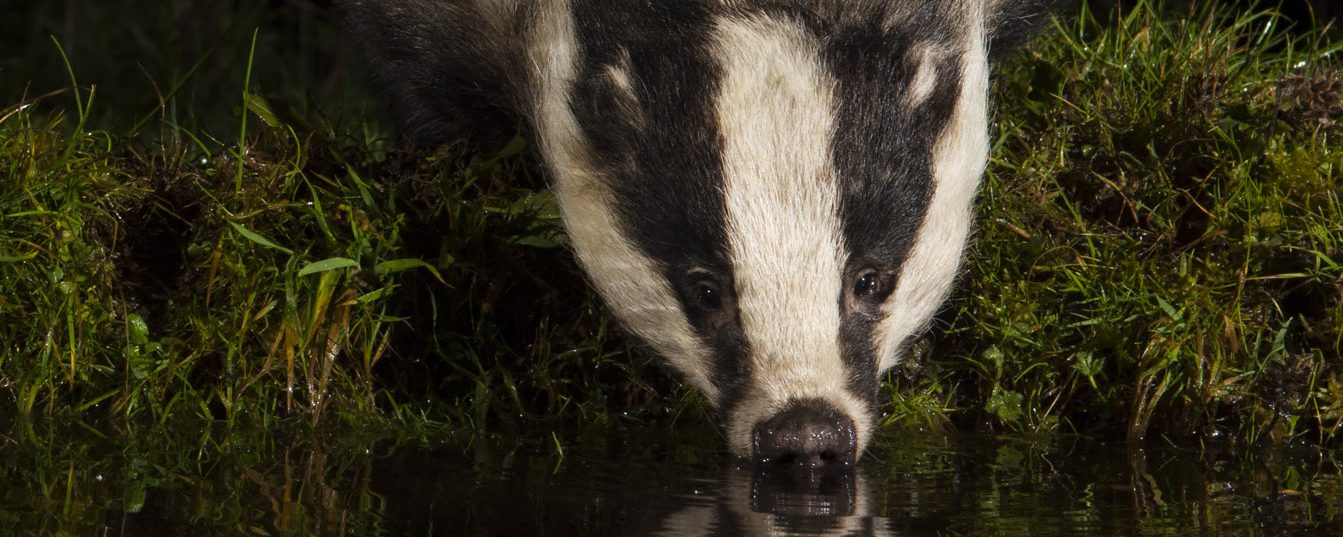
A new scientific paper published in Veterinary Record today 18th March 2022 analyses government data on bovine tuberculosis (bTB) collected by farmers and vets for a decade. It has been made available on open access here. A short video summarising the findings of the paper is available here.
It is quite a lengthy paper, and although much of the presentation is straightforward, the statistical parts in particular are highly specialised. We’ve put together a short summary of the papers’ findings, to show what is most important.
There are two main findings. The first is really good news for farmers, cows and badgers. Data suggests that the cattle-based measures implemented from 2010, and particularly the introduction of the annual tuberculin skin (SICCT) test are responsible for the slowing, levelling peaking and decrease in bovine TB in cattle in the High Risk Area (HRA) of England during the study period, all well before badger culling was rolled out in 2016.

Cattle-based measures also include other controls and measures such as improved hygiene and the use of interferon-gamma testing as a supplement. The downside of the SICCT test however is that it has a relatively low sensitivity; this means it can miss up to 50% of true positive cases. One in seven ‘cleared‘ cattle herds, is not free from bTB, perpetuating the crisis as they are traded and infect new herds. In other words, testing and movement controls need to be further improved to root out the undetected reservoir of disease that remains hidden and undiagnosed in cattle. Cattle measures have brought bTB down by 33% over the last five years and should continue to cause a drop in rates. Declines will slow and stop however as they have in Republic of Ireland without tighter controls and use of new generation testing, as with the ‘Gatcombe’. protocol,
The second finding came from a look at the amount of cattle bTB in areas that had undergone a badger cull and compared it with the amount of disease in areas that had not had culling. This was done over a six year period 2013-2019, so before and after culling was rolled out. Multiple statistical models checked the data on herd breakdowns over time and failed to find any association between badger culling and either the incidence or prevalence of bovine TB in cattle herds. Badger culling efforts appear to be to no effect.
Results showed that that heavily culled counties, culled for longer, had similar disease change patterns to counties culled for just a year or two more recently. Breakdowns peaked on average in 2015, with reductions thereafter. As previously stated, this is well before the badger culls were rolled out in 2016. The analyses do not provide any evidence for the efficacy of badger culling as a bTB control intervention. The results are consistent with predictions by the earlier scientific reference study (RBCT) that badger culling can make no meaningful contribution to the control of bTB in cattle.

Further, although Defra keep the data based on each badger cull area secret for reasons that are not in the public interest, and in defiance of multiple rulings by the Information Commission, they do claim to have additional data that may be of use in analysis. This may include the number of badgers for which money has been claimed in each cull area.
It is strange that since the legal cases in 2018 when Defra pleaded to the effect that they would ‘adapt (their policy) and learn’, no learning in the form of reporting has been published, which defies legitimate expectations. Is this because their data says badger culling is working? It seems highly unlikely. It seems more likely that it suggests it is not working, which may be why nothing credible has been said about the four years of data since the report on 2013-2017.
Badger Crowd understands that letters will be sent to the government asking them to explain the scientific reasoning behind the decision to phase down Intensive ( 70 %) badger culling in favour of ‘Epi’ (100%) badger culling. Also, asking them to bring the cruel ineffective £100 million badger culls to an immediate and complete end this year as they should have done based on the data and views exchanged with them in March 2021 that were dismissed to allow the killing of an estimated 50,000 badgers last year.
Discover more from The Badger Crowd - standing up for badgers
Subscribe to get the latest posts sent to your email.

